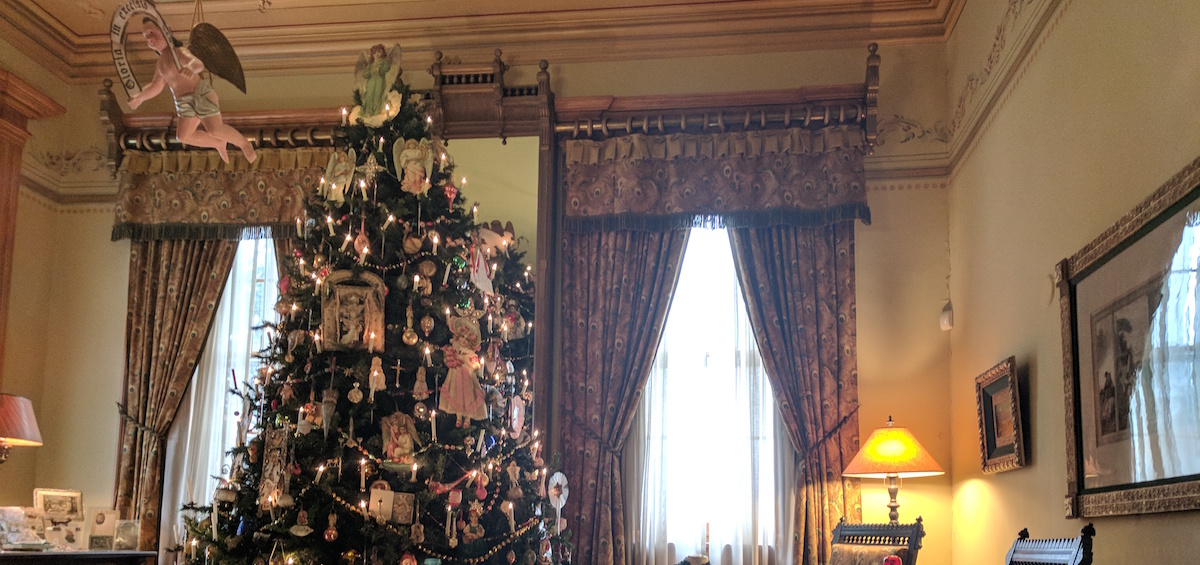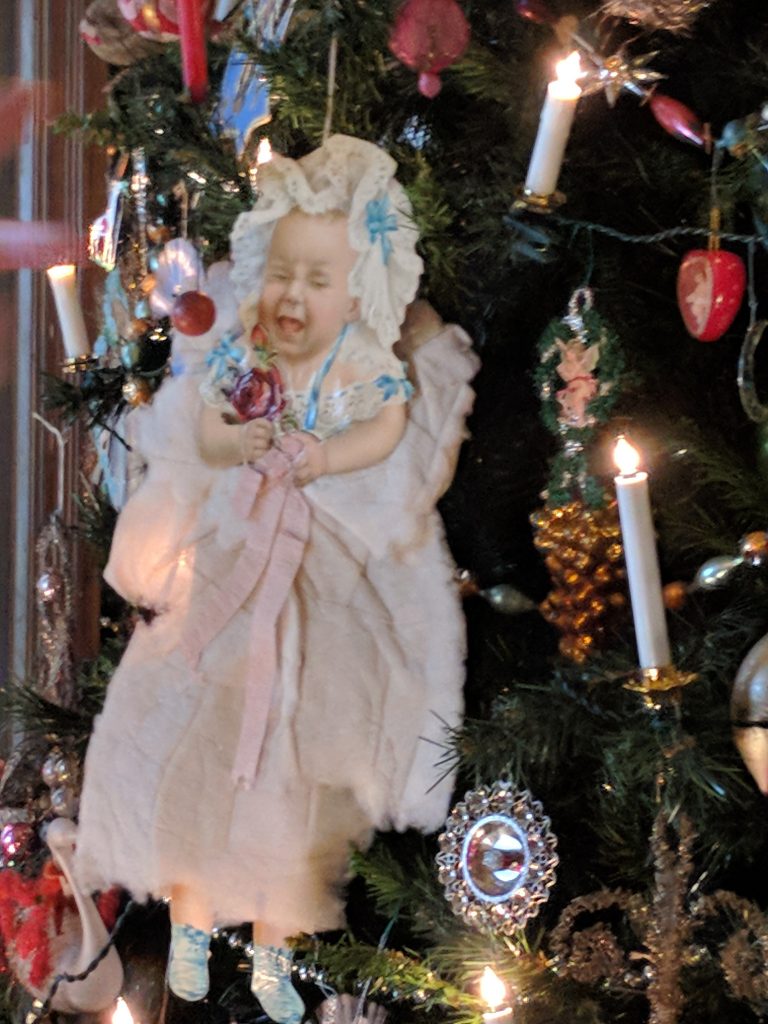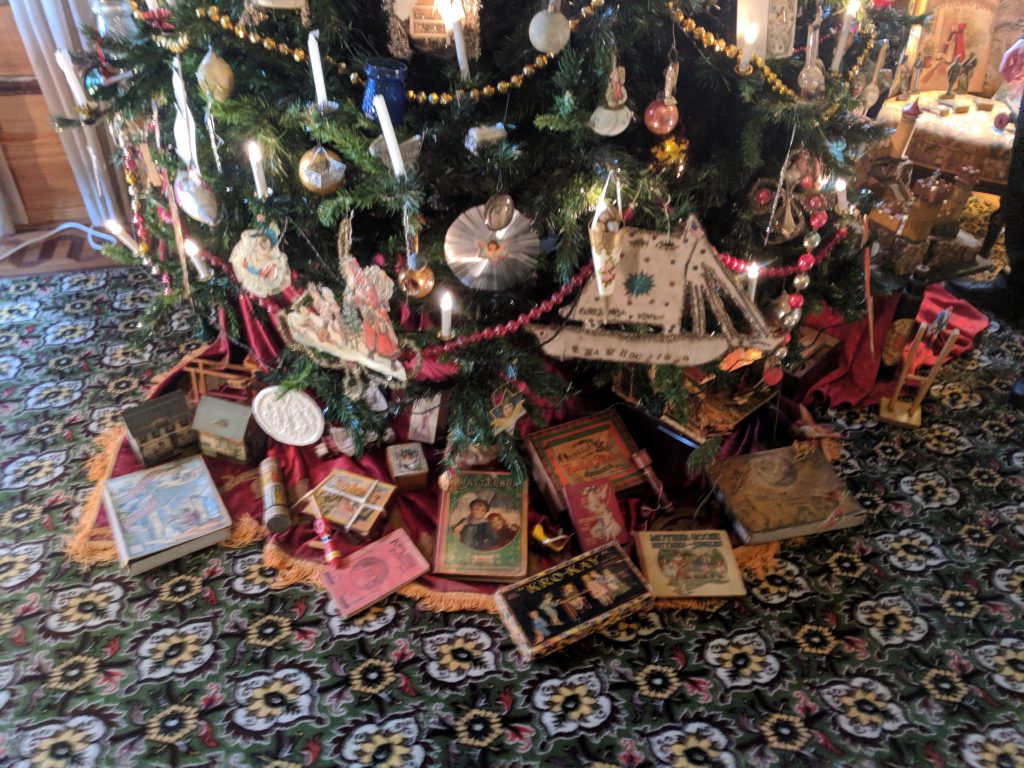Culture

Heritage, Tradition, Memory: the Emotional Significance of a Christmas Tree
By: Emily Votaw
Posted on:
Nearly over a hundred years ago in the midst of December, a boy in America found a cardboard banjo atop a pile of trash in an alley. Delighted, he brought the miniature home to his older sister, giving it to her as a Christmas present. Their family was not rich, and the small, whimsical thing brought his sister much joy. The girl loved it, treasured it, couldn’t wait for the next holiday season to come around so that she could hang it on her family’s tree. The next year came, but her brother didn’t survive to see the banjo hung, having succumbed to Spanish flu.
The girl would keep the banjo with her throughout her childhood and into her adulthood, retelling the melancholy tale to her children, and, eventually, her grandchildren, each Christmas. One of her grandchildren is historian and retired teacher George Johnson.
“Through my research, I found that it was actually a little candy container,” said Johnson, referencing the extensive holiday research that he and his wife have conducted, something they took up while in graduate school as a way to understand the Victorian-era furniture they were buying for cheap to furnish their first apartments.

Johnson has been responsible for numerous holiday displays at the Decorative Arts Center of Ohio in Lancaster, and this holiday season is no different. This year the museum presents Victorian Grandeur, the entire Rising Room of the center filled with artifacts celebrating Christmas from 1860 to 1900, complete with an opulent 10-foot tree. On Sunday, December 3 at 2 p.m. Johnson will speak specifically on the nature of a Victorian Christmas tree at the center. Cost for attendance is $8 for members ($5 prepaid reservation,) and $10 for all others.
Johnson and his wife do not only collect Christmas things – they collect artifacts from Easters and Halloweens past, as well. Last February they put together the stunning collection of Valentine’s Day ephemera that was on display at DACO. Although they are stewards of all kinds of old things, Johnson said their Christmas collection was the original one.
“We found that we could purchase Victorian-era furniture for a fraction of the price of new furniture,” he said. “We decided that we should have a (Christmas) tree that would fit in with the Victorian furniture we had bought. We started out by asking our parents and grandparents for things. Every family has a few things at the bottom of the box that they just don’t think look that great on the tree anymore – and we asked for those. As a child of the ‘50s, I was also hoping to get bubble lights, even though my mother insisted that all of her old ones were burnt out and thrown away. I knew that somewhere in the attics of little old ladies in Lancaster there had to be some working bubble light strings.”

Johnson and his wife put an ad in the local paper inquiring about such lights, and, surprisingly, they received more responses than they could have anticipated.
“A lot of the people who answered the ads were little old ladies who didn’t put up a Christmas tree anymore. Maybe their kids had moved to Florida or Cleveland or something, and a lot of them asked if we just wanted to buy all of their Christmas stuff. And we said, ‘sure!’” he said. “And that began the process of researching the holiday items we found – figuring out how old they were, when they were made. Our collection has just grown from there for the past 50 years.”
“We decided that we should have a (Christmas) tree that would fit in with the Victorian furniture we had bought. We started out by asking our parents and grandparents for things. Every family has a few things at the bottom of the box that they just don’t think look that great on the tree anymore – and we asked for those. As a child of the ‘50s, I was also hoping to get bubble lights, even though my mother insisted that all of her old ones were burnt out and thrown away. I knew that somewhere in the attics of little old ladies in Lancaster there had to be some working bubble light strings.” – George Johnson, on the origin of he and his wife’s enormous historical holiday collection
The tree in the Rising Room at DACO is stunning – laden with antique ornaments, artificial candles, period chromolithographs, tinsel, and more.
“What I tried to do with this tree was represent a lot of the different styles of the Victorian tree in the heyday of that era. You certainly would have not seen a tree like this in even the wealthiest homes,” said Johnson. “It’s a museum statement more than anything. Generally Victorian trees were six feet at the tallest, and most people had tabletop trees that were only three or four feet tall.”
Although the tree currently on display at DACO represents a sort of undefined, collective memory of an era that is far in the past, last year the museum hosted a series of period trees prepared by Johnson, starting in the ‘50s and through the ‘80s.

“Those trees elicited some emotional responses,” said Johnson, referencing last year’s display. “A tree that resembles your childhood tree really strikes an emotional chord for people. Back in the Victorian era, there was a lot of diversity in what people decorated their trees with – now it’s pretty much plastic and glass and tinsel and that’s about it. If you’re working with plastic, you can have a five-year-old help decorate the tree – you can give them that ornament and tell them they can hang it, and they will hang it every year when the box of decorations comes out. If you’ve put a particular ornament on the tree every year for the past 20 years, then it becomes your ornament and that’s the thing you take out of the box when mom and dad die. Then you tell your children and eventually your grandchildren about the ornament, and that’s where a part of the specialness Christmas trees comes from. It’s about it’s about religion and peace – but, more than anything, as it relates to the family, I think Christmas trees have more to do with a sense of heritage and tradition and memory and emotion.”
Other holiday happenings at the Decorative Arts Center of Ohio include:
Christmas at the Reese-Peters House – December 12, 6 – 8 p.m.
Join the museum for an evening of fun featuring holiday treats and even a visit from Father Christmas himself.
Holiday Classes and Programs (register online at here)
Bead Weaving and Ornaments 10 a.m. to 12 p.m. December 2, 9, 16
Gift Making 10 a.m. to 12 p.m. December 2
What We See in Southern Ohio Landscapes: Looking Closely at Our Photographs 2 p.m. December 10

